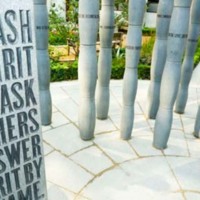
Gilt of Cain
Gilt of Cain was unveiled by the Archbishop Emeritus Desmond Tutu in Fen Court, City of London, in September 2008. The artwork, a collaboration by sculptor Michael Visocchi and poet Lemn Sissay, commemorates the abolition of the transatlantic slave trade. The granite sculpture is composed of a group of columns surrounding a podium – suggesting an ecclesiastical pulpit or slave auctioneer’s block. Extracts from Lemn Sissay’s poem, ‘Gilt of Cain’, are engraved into the granite.
Fen Court is the site of a churchyard formerly of St Gabriel’s Fenchurch St and now in the Parish of St Edmund the King and St Mary Woolnoth, Lombard St. The latter has a strong historical connection with the British abolitionist movement of the 18th and 19th centuries: Reverend John Newton, a slave-trader turned preacher and abolitionist, was rector of St Mary Woolnoth between 1780 – 1807. This project was initiated by Black British Heritage and the Parish of St Mary Woolnoth and was commissioned by the City of London Corporation in partnership with the British Land Company.
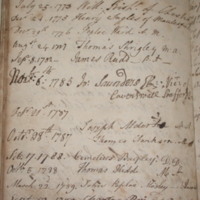
Exhibition on Thomas Clarkson at Manchester Cathedral
Manchester Cathedral held an exhibition on the abolitionist Thomas Clarkson in 2007. Clarkson was invited to preach a sermon at the Collegiate Church (which became Manchester Cathedral) in 1787, a sermon which had a profound impact on public opinion and support for anti-slavery societies in the city. Clarkson's name was recorded in the 'Book of Strange Preachers at the Collegiate Church, Manchester', on display at the exhibition.
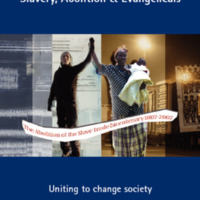
Slavery, Abolition & Evangelicals: Uniting to change society
The official publication from the Evangelical Alliance to commemorate the bicentenary had three main aims: to draw attention to biblical perspectives on slavery and society, to examine the contributions of some key abolitionists, and to offer some suggested activities for churches and groups to mark the bicentenary.
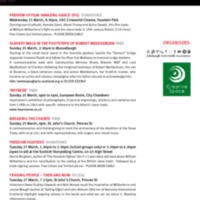
Marking the 200th anniversary of the Abolition of the Slave Trade
A programme of events to mark the bicentenary was organised by Edinburgh Inter-Faith Association. This included a slavery walk in the footsteps of Robert Wedderburn, a commemoration and thanksgiving service at St John's Church in Edinburgh, and a debate and discussion on the theme 'Trading People - Then and Now'.
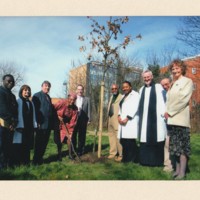
Events led by Leyton and Leytonstone Historical Society
The Leyton and Leytonstone Historical Society led a number of commemorative events to mark the bicentenary. In March 2007 an oak tree was planted in the churchyard of St John’s Church Leytonstone. At the ceremony there were a number of speeches, after which community nurse and local campaigner Mrs Zena Edmund-Charles was invited to plant the commemorative tree. There was also an art exhibition at St John's featuring artefacts and mementos of the period. A commemorative ‘Freedom Walk’ was led by local historian Peter Ashan, following a route around Leyton, Leytonstone and Walthamstow. The exhibition was shown again during Black History Month, alongside a video story of Olaudah Equiano.
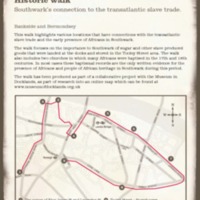
Southwark and Abolition
Southwark Council created two online resources to commemorate the bicentenary. A historic walk, produced in collaboration with the Museum of London Docklands, highlighted locations connected with the slave trade and the early presence of Africans in Southwark. A timeline detailed key dates and events that led to the transatlantic slave trade, including Southwark's local connections to the trade and its abolition. The Cuming Museum in Southwark also held an exhibition, 'Lost and Found'.
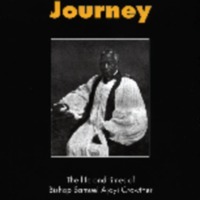
Crowther's Journey: The life and times of Bishop Samuel Ajayi Crowther
Southwark Pensioners Centre Black History Group led a project to explore the life of Bishop Samuel Ajayi Crowther. Born in Yorubaland, Nigeria, kidnapped and sold into slavery, Crowther became the Anglican church's first African-born bishop and an influential missionary in West Africa. The Crowther's Journey project involved weekly research and discussion sessions and visits to places of significance, such as the church of St Mary in Islington, where Crowther was ordained. This booklet focuses on the responses and reflections of members of the group on Crowther, his life and his legacy.
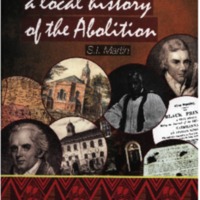
Lambeth and the Abolition
The Lambeth and the Abolition programme included debates, historic trails, a video conferencing discussion between people in Brixton, Ghana and Jamaica, Caribbean family history classes, creative writing workshops, and a dedicated series of events within Black History Month. ‘The Runaways’, an original drama about a runaway slave boy and a kitchen maid in London in 1700, was performed in Lambeth primary schools, accompanied by a workshop. The project researched the local historical links to abolition, and famously the activities of the Clapham Sect (William Wilberforce and his associates) who attended Holy Trinity Church in Clapham. A booklet by historian S. I. Martin sets the history of abolition in the larger context, through his study of the African Academy at Clapham, and his mapping of some of the links between Lambeth, Jamaica and West Africa at the beginning of the 19th century.
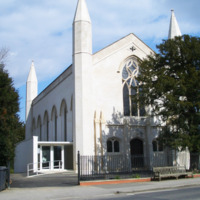
Celebration of the Bicentenary of the Abolition of the Atlantic Slave Trade
After 1825, on leaving Parliament, William Wilberforce retired to Hendon Park in Mill Hill, North London, and during his retirement built a chapel on his estate, now St. Paul's Church. St. Paul's organised a programme of events in 2007 to mark the bicentenary, including concerts by The London Community Gospel Choir and The St. Ignatius Gospel Choir. A series of exhibitions in London Borough of Barnet libraries explored Wilberforce's local connections, and visits to local schools encouraged pupils to express their understanding of slavery and abolition in art, and stressed the need to continue the work of abolitionists today. The programme also included a number of open public meetings with invited speakers exploring different aspects of Wilberforce's life and work, including his collaborations with Thomas Clarkson and John Newton. In 2008 the Wilberforce Centre was opened in the crypt space of St. Paul's.
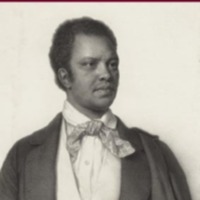
Events to mark the bicentenary in the City of Westminster
In 2007 Westminster City Council supported a programme of events in the libraries, galleries and archives of the area, including films, walks and exhibitions, designed to provide opportunities to learn about the culture of Westminster's communities. Highlights included guided heritage walks with historian S. I. Martin, exhibitions of images from the Royal Geographical Society in Paddington Library, Maida Vale Library and Westminster Reference Library, and film screenings (in partnership with 100 Black Men of London). A partnership between the City of Westminster Archives Centre, Tate Britain, Parliamentary Archives, National Gallery and National Portrait Gallery produced a heritage trail 'On the Road to Abolition: Ending the British Slave Trade', which takes in key sites, events and individuals in Westminster relating to the slave trade, between Trafalgar Square and Pimlico. In celebration of Black History Month, Westminster City Council produced a booklet, 'Black History in Westminster', detailing some of the borough's influential Black residents.
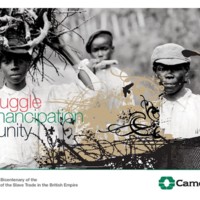
Struggle, Emancipation and Unity
The year-long programme of commemorative events from Camden Council was put together in consultation with the 1807-2007 Taskforce of local African and Caribbean community leaders. The key to these events was remembering slavery through the resistance of Africans, their celebration in their liberation and their unity in tackling present-day inequalities. Camden’s 18th and 19th Century Slavery Trail was created around the area. In eight stops, it explored the lives of men and women connected to the slave trade who lived and worked in the London Borough of Camden. The Resistance Film Season, in partnership with the British Museum, explored the legacy of the slave trade through a mixture of contemporary and classic films. Other events also included local exhibitions, poetry readings, debates and talks.
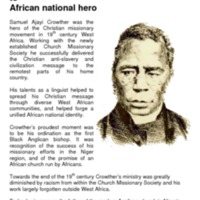
Samuel Ajayi Crowther: From slave boy to African national hero
Samuel Ajayi Crowther was Britain's first Black Anglican Bishop. He was born in Yorubaland, part of modern South Western Nigeria. After being enslaved, he was rescued at sea by the Royal Navy and began his missionary education in Sierra Leone. Crowther studied in Islington on two separate occasions: first, at St Mary’s Parochial School, and later, at the Church Missionary Society College on Upper Street. He was ordained at St Mary's Church in Upper Street before returning to Africa to begin his missionary work. His ordination as Bishop was in recognition of the success of his missionary efforts in the Niger region. His life, and connections to the London Borough of Islington, were the subject of this exhibition at Islington Local History Centre.
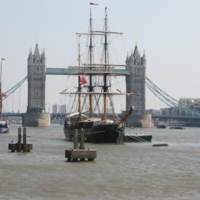
Spirit of Wilberforce
The Centre for Contemporary Ministry (CCM) is an educational charity specialising in the study of contemporary social issues. The CCM established a slavery exhibition at their base, Moggerhanger Park in Bedfordshire, once country home of members of the Thornton family, cousins of William Wilberforce. A mobile travelling display toured local venues. ‘Free at Last?’ was also part of the Spirit of Wilberforce project. This initiative saw a replica of the 18th century slave ship ‘Zong’ sail into London on 29 March 2007. The replica ship was accompanied up the River Thames by HMS Northumberland as part of the Royal Navy’s contributions to the bicentenary. The ‘Slavery Past and Present’ exhibition on board the replica was opened by the Mayor of London – a virtual reality display depicted conditions on a slave ship. The exhibition continued at the church All Hallows by the Tower, exploring the work of the abolitionists and the legacy of slavery. HMS Northumberland also opened to the public - an exhibition on board explored the role of the Royal Navy in enforcing the 1807 Act.
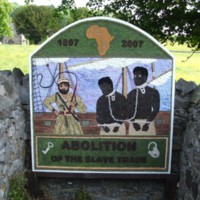
Well Dressings in Derbyshire
Well Dressing is an ancient custom unique to Derbyshire. Each year, between May and September, hundreds of well dressings are created by volunteers in Derbyshire villages. According to many sources, it developed from a pagan tradition of making sacrifice to the Gods of wells and springs to ensure a continued supply of fresh water. In the Derbyshire tradition, pictures are made for the most part of individual flower petals pressed onto clay covered boards. In 2007, many wells were dressed to mark the bicentenary. Pictured are wells in Ashford-in-the-Water, Belper, Tissington and Wirksworth, photographed by Glyn Williams.
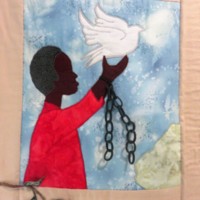
The Abolition of Slavery Quilt
The Abolition of Slavery Quilt was created to commemorate the bicentenary by the Freedom Quilters of Wisbech, a community group with an interest in patchwork and quilting. The quilt is made of several panels, one of which depicts the Thomas Clarkson memorial in Wisbech town centre; other panels stress the link between Christianity and the abolition of the slave trade. It was displayed at Wisbech Baptist Church at the Annual Rose Fair in July 2007. The Rose Fair Flower Festival raises money for charity, and in 2007 had a theme of 'Heroes of Freedom'. The quilt was also loaned to Peckover House, a National Trust property in Wisbech. It remains on display at Wisbech Baptist Church.
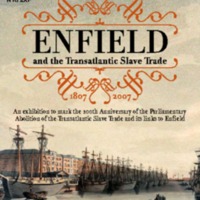
Enfield and the Transatlantic Slave Trade
An exhibition to mark the bicentenary was developed by Enfield Museum Service in partnership with the British Museum and Enfield Racial Equality Council. The exhibition looked at West African culture, the development of the local African community, the links between the transatlantic slave trade and Enfield, wealthy landowners and Quaker abolitionists who lived in the area. Free family days held during school vacations offered traditional Ghanaian story-telling, dancing and drumming, crafts and object handling. Living History Days gave visitors the opportunity to meet actors portraying William Wilberforce and Olaudah Equiano. School workshops included a drama session and performance about a runaway slave developed from material from Lambeth Archive. The museum service also produced a book, edited by Valerie Munday, which explored further the links between Enfield and the slave trade. The book was sent to all schools in the borough, and formed the basis of a teaching resource aimed at Key Stages 2 and 3. Loan boxes and handling collections provided by the museum service include Ghanaian artefacts and items relating to the slave trade. In 2011, Enfield Racial Equality Council unveiled a plaque to commemorate abolition at the Enfield Civic Centre.
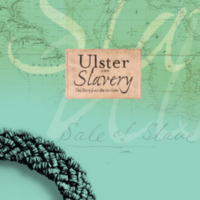
Hidden Connections: Ulster and Slavery 1807-2007
The Hidden Connections exhibition was a result of partnership between the Public Record Office of Northern Ireland (PRONI) and the Linen Hall Library in Belfast. The exhibition explored Ulster's links with slavery after 1807 via people, events and places, and looked at both the pro and anti-slavery debates in Northern Ireland. It drew on documents from PRONI’s archives, artefacts from the Ulster Museum and contemporary books and pamphlets from the Linen Hall Library and elsewhere. After its launch at Linen Hall Library, the exhibition toured Northern Ireland, travelling to Down Museum, the Harbour Museum in Derry, Lisburn City Library and the Ulster American Folk Park.
The wider Hidden Connections programme featured workshops exploring archival sources, performances and lectures by leading scholars. There was a panel discussion on ‘Slavery Now’, a walking tour of Belfast sites associated with the slavery issue, and a boat trip on the Lagan focusing on the port’s links with slave colonies. Gerry McLaughlin’s ‘Blood sugar’ is a drama documentary devoted to the literature of slavery, music and song. 'Freedom and Liberty' was the theme of the UK-wide Archives Awareness Event. PRONI organised special events and produced a catalogue, 'Ulster and Slavery', listing the references to slavery to be found in the archive.

Freedom from the Past: Long Time Coming
A collaborative project between Churches Together in Northampton, English Heritage, Northamptonshire Black History Association (NBHA) and The Northampton Schools Excellence Cluster. Freedom From the Past: Long Time Coming was led by Mary Clarke, Director of the Doddridge Centre, where the NBHA office is based. The project commemorated the 1807 Act and the wider histories of black resistance and the fight against the slave trade through music, drama and historical workshops in Northampton.
The 'Passage' event was held in St Giles' Church on 25 March 2007, an evening of drama, songs and speeches reflecting on the legacies of slavery. There was a 150-strong gospel-style community choir drawn from schools in the Northampton area and local community groups. The event was one of a range of project activities in Northampton which brought together schools, community groups, churches and heritage organisations to explore the issues of slavery in the British Empire. Other events included a community event and 'Walk to Freedom' at the Northampton West Indian Community Association (NWICA) to mark 'Emancipation Day', annually held throughout the Caribbean to celebrate the abolition of slavery. English Heritage funded a professional DVD recording which was afterwards made freely available to NBHA members and others.
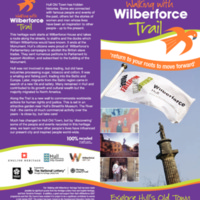
Walking with Wilberforce Heritage Trail
Part of Wilberforce 2007, the Walking with Wilberforce Heritage Trail is a journey through Hull's Old Town, via twelve important landmarks related to William Wilberforce and the theme of freedom. Along the trail is the Humanitarian Wall, at the Wilberforce Institute for the study of Slavery and Emancipation, constructed in 2006 to commemorate worldwide actions for human rights and justice. The ceramic markers, inspired by the Sankofa bird, were designed especially for the trail by three community and art groups from Hull's Africa Forum, from Hull College ceramic students and from local schools working in collaboration with two local ceramic artists. The trail was launched with a celebration of African culture led by students from Hull schools and the local Congolese community.
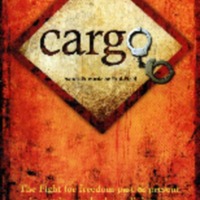
Cargo
Written by composer Paul Field, Cargo premiered in Hull City Hall in March 2007, sponsored by Hull City Council. Cargo featured contemporary songs, narration, dance and images that told the story of the struggles of slaves, the historical work of William Wilberforce and the abolition movement, through to the contemporary struggles against slavery today. Performers included the singer Coco Mbassi, saxophone player Mike Haughton and Springs Dance Company. The narrators and choir were local people, including members of City of Hull Youth Choir, Redemption Gospel Choir and Hot Gospel in Hull. Cargo was also performed in London, Plymouth, Bristol and Liverpool. Smaller events were put on by church and community groups around the UK, assisted by the script, score and backing track of the music being made available on CD-Rom.